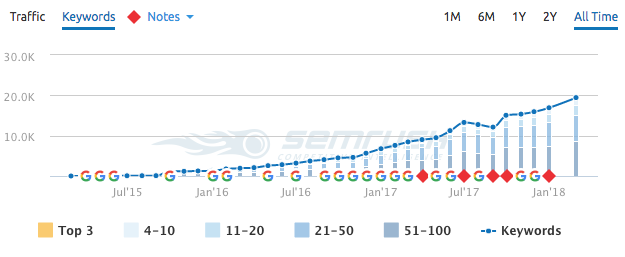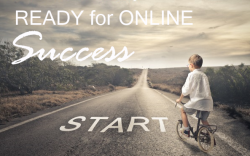
Are you looking for tips and ideas on content marketing for blogs?
Maybe you are running a blog yourself and want to get started or up your game around content marketing. Or maybe you are putting together a content marketing strategy for somebody else’s blog.
Either way, it’s safe to say that content marketing for blogs can be a great way to drive traffic to a blog, connect with the reader and ultimately turn them into a loyal follower and customer.
What Is Content Marketing?
Content marketing is a strategy or technique to create and submit helpful, valuable and relevant content on a consistent basis to a very targeted group of people. The goal is to get a profitable customer action.
The content can be provided in many different forms, video, blog content, infographics just to mention a few, the key though is storytelling. To connect with your targeted readers and build a relationship with them by providing valuable and relevant content that they can relate to.
Content marketing is no quick fix strategy, this is a long-term strategy providing content on a consistent basis. Building that trust and creating loyalty, so when it comes time to make a purchase, you have created that bond with your reader, for them to choose you and your solution and not a competitors.
Content Marketing for Blogs – 9 Tips to Make It Work 2018
1. Put Your Reader in Focus
To be able to connect with your reader and provide helpful valuable content for them you need to understand your audience. You need to be able to relate to your audience and their problems. Knowing their problems, understand their problems and relate to their problems will help you solve your reader’s problems.
2. Who’s Your Ultimate Visitor?
You can even set up a profile for your ultimate visitor. Who is he or she? Age? Interests? What are they looking for? Pain points? How do they want their content delivered?
Creating the “ultimate visitor” can help you target that specific person when you create your content. It becomes easier to write and create specifically for that person.
3. Different Content Formats to Use
Earlier I mentioned a few different content formats, I want to provide you with a few more content format alternatives:
- Blog content like how to articles, case studies, reviews, list posts
- E-books
- Newsletters
- Images like charts, illustrations, mind maps, photos
- Giveaways
- Webinars
- Podcasts
- Interviews
- Videos, vlogs,
- Surveys, polls
These are some of the ways that content can be delivered and help you tell your story.
Although some of these seem new and pretty high tech, content marketing itself is nothing new, it’s been around for hundreds of years. People and businesses giving away content in the form of magazines and calendars for example, for free, with a note from the company. Creating value, building trust, brand awareness and a connection with their audience.
4. Rank that Content
In today’s online world one of the main goals is to rank that content in the search engines, getting organic free traffic. Landing the first-page position in Google, Yahoo and Bing is the goal of every content marketer.
The competition is tough with hundreds sometimes thousands of websites fighting for the same top 10 positions. Using keywords and SEO effectively is a must.
When you want to rank that content, there are a few things to think of:
- SEO
- Keywords
- Internal Linking
- Content length matter
- External links
- Submit content on a consistent basis
You can learn everything you need to learn about content marketing and ranking it through this program here!
5. Get Your Content Seen
Your goal is to get your blog content seen, that might be on Google, on social media or even offline. The content must get in front of people to even have a chance to connect and allow you to tell your stories. There’s a lot to be said about promoting your content, but here are three ways to get started.
- Make sure the content ranks in the search engines.
- Share your content on social media like Facebook, Twitter, Instagram, Pinterest.
- Build a list to reconnect with your visitors.
6. Content Mapping
You want to be able to map out your content and know where and when it’s relevant. If you think of it as taking a complete stranger and turn him or her into a “fan” there is a process, a cycle, to it.
You want to take that person from point A to point C. Just like you have a customer buying cycle you will have a customer content cycle.
Point A – The first stage is the information stage where the reader is a complete stranger looking for relevant information and possibly solving a problem. This is where you provide helpful content like blog posts, videos, infographics, interviews and more. You might even give them the opportunity to more relevant content in the form of an e-book, report, guide or case study in the exchange of their email address.
Point B – This is where you can start forming a relationship with your audience, you can contact them again via email providing them with updates, newsletters, webinars and more. Encourage them to engage, share and like on social media for example. They now have brand awareness, they know who you are.
Point C – When you have started that relationship and built that trust, it will be a lot easier to give them an offer. Give them a solution to their problem and turn them into a customer.
7. Know How Your Content Is Performing
You can log into your Google Analytics and see all the stats necessary for your content marketing performance. How many visitors are you getting, is the visitor count growing? What kind of content is performing best bringing in traffic to your blog? You can even see the demographics of your visitors.
Google Analytics is very helpful and provides you with great information to grow and improve your blog.
Another tool I like to use is SemRush. If you rely on rankings in Google and other search engines, this is a great tool to check that. They will tell you if you gain or lose rankings and over time you can see the growth in rankings.
Here’s an example from one of my blogs, how the rankings have grown over time:

As you can see helpful content, submitted on a consistent basis will grow in rankings over time.
8. Testing
Running tests like A/B testing can be a great help to determine what will work best and most efficient on your blog. There are many different ways to do testing on a blog and one of the most common ones is the A/B testing. You show and compare similar scenarios and go with the one that gives you the best result.
Testing is a great way to improve your blog.
9. What Makes a Good Content Marketing Blog?

So what do you think makes a good content marketing blog? I would love to hear your thoughts on that in the comment section below. Here are a few things that I look for:
- Relevant content
- The blog provides value
- The blog knows how to help their visitors
- Consistency of submissions
- Good on-page and off-page SEO so that it get’s seen
- Encourage engagement
- Sharing good stories
Case Study – Content Marketing Blog Stats and Numbers
If you want some real stats and numbers from one of my blogs, take a look at my case study site. This is a blog based on content marketing. I provide helpful content on a consistent basis and it has proven to work pretty well. It is growing steadily and starting to make decent money as a result.
Feel free to check out the 2017 result here!
What’s your story to tell?
Have a productive day,
Vicky




Leave a Reply